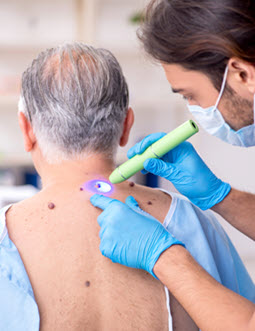Learn about skin cancer risks and prevention methods.
Learn about skin cancer risks and prevention methods.
Blog Article
Navigating Skin Cancer Cells Therapy: The Necessary Role of Mohs in Modern Dermatology Practices
Skin cancer, an overwhelming diagnosis, commonly leaves individuals grappling with many therapy options. As we discover the details of this procedure, one will certainly value its essential duty in skin cancer cells therapy.
Understanding Skin Cancer: Types and Dangers
Skin cancer cells, a potentially serious malady, is even more prevalent than many individuals understand. This disease, triggered by the unchecked growth of unusual skin cells, mainly arises from DNA damages due to direct exposure to the sun and ultraviolet (UV) light. There are three major sorts of skin cancer cells: Basal cell carcinoma, Squamous cell carcinoma, and Cancer malignancy. While the former two are much less deadly and make up most of identified cases, melanoma is the most hazardous. It makes up only about 1% of skin cancer cells situations however creates the large bulk of skin cancer fatalities - hair loss. Risk variables consist of reasonable skin, history of sunburn, extreme sun direct exposure, living at high elevations or near the equator, having lots of moles, a household history of skin cancer cells, and damaged immune system.
What Is Mohs Surgery and Just How It's Transforming Skin Cancer Cells Treatment
In spite of the numerous treatments currently offered for skin cancer, Mohs surgical procedure stands out as a groundbreaking and highly effective service. Named after Frederic E. Mohs, the physician who established the procedure, Mohs surgical procedure is an accurate medical technique made use of to treat skin cancer. This degree of precision, incorporated with the capability to save as much healthy tissue as possible, is changing skin cancer cells treatment.
The Advantages of Mohs Surgical Treatment Over Traditional Skin Cancer Cells Treatments
Building on the cutting-edge nature of Mohs surgical treatment, it's essential to consider its numerous advantages over standard skin cancer therapies. Unlike basic procedures, Mohs offers a greater cure rate, typically getting to 99% for novice treatments and 94% for reoccurring cancers. This accuracy is because of its unique approach of gradually getting rid of and checking out tissue layers till just cancer-free cells remain (skin cancer). Additionally, it decreases damages to healthy and balanced skin, bring about less scarring and enhanced aesthetic results. Mohs likewise provides instant outcomes, getting rid of the anxiety-ridden wait usual with various other methods. It's cost-efficient, as the surgical treatment and microscopic evaluation take place concurrently, getting rid of the requirement for extra laboratory solutions. Hence, Mohs represents click to investigate a considerable innovation in skin-related methods.
The Procedure of Mohs Surgical Procedure: What to Expect During the Refine

Potential Side Impacts and Post-Operative Treatment of Mohs Surgery
Undertaking Mohs surgery, like any kind of other surgical treatment, involves potential adverse effects that people ought to recognize. Common negative effects consist of pain, wounding, and swelling at the surgery site. However, these are usually temporary and convenient with non-prescription pain medicine and ice packs. In rare instances, patients might experience infection, bleeding, or an allergy to the anesthetic. Post-operative care is crucial to healing and decreasing side impacts. This typically involves keeping the wound clean and completely dry, taking recommended medications, and staying clear of difficult tasks. Patients need to also attend all follow-up appointments for injury care and tracking. In many cases, additional treatments may be needed to make certain total elimination of the cancerous cells. Abiding by these post-operative care standards can greatly enhance recovery and end results.
Final thought

Report this page